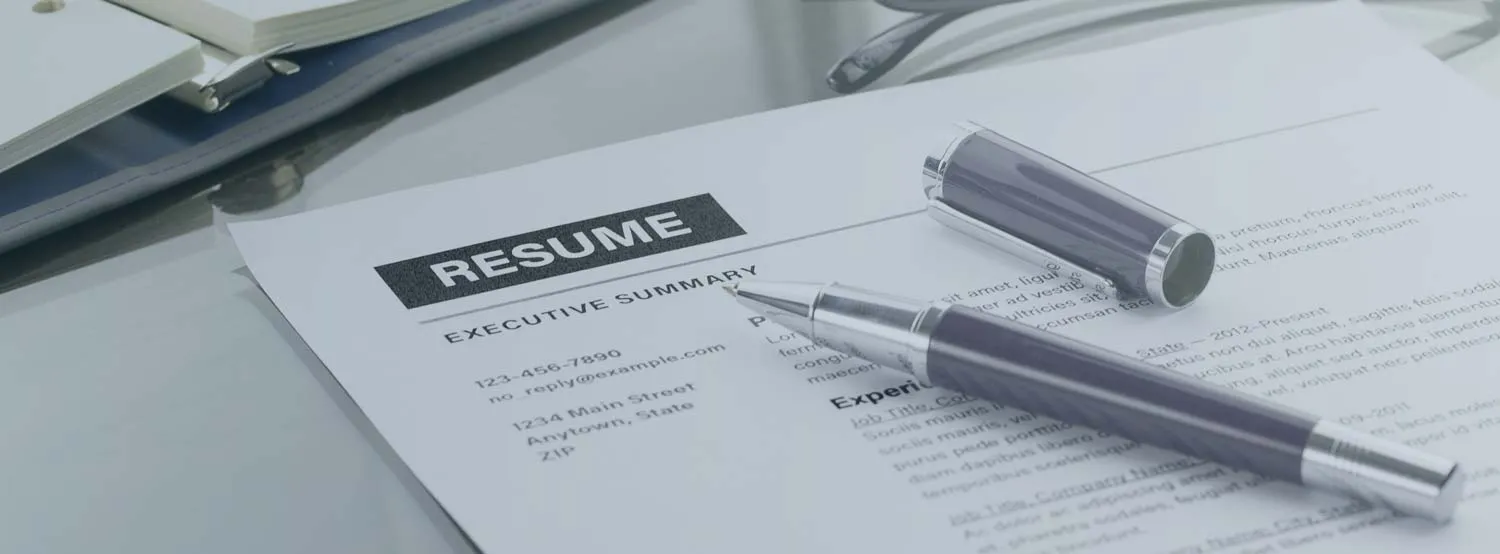Best Resume Format for Actors With Resume Writing Tips
Auditions are heart-pounding enough! Our resume templates for actors will guide you through the process, so you can save your energies and focus your talents on your performances.
Our customers have been hired by*:*Foot Note

Acting is a unique profession. It requires a set of specialized skills and attributes that don’t always translate into work terminology. And the experiences that help an actor gain knowledge and expertise often don’t fit neatly into a traditional resume format.
Creating a strong acting resume requires a significantly different process than regular resumes. Hiring managers (usually casting directors, directors, or producers) still have their own set of expectations or “resume rules” that are important to follow. And like many creative professions, a resume is just a part of a comprehensive acting portfolio to showcase your talents.
We’ll walk you through the best resume format for actors and show you how to write each section and highlight your skills, so you can take your acting career to a bigger stage.
The best resume format for actors
Acting resumes are sparer on details than most traditional resumes. And dates usually aren’t listed. This makes a big difference in the flexibility of how you compose your work history – enabling you to customize your resume for each opportunity and feature the most impressive and relevant work first.
For example, if you’re applying for a part in a Shakespeare festival, you would want to list your stage experience first, particularly your Shakespearean experience. If you are seeking a film role, you’d want to highlight film experience first. Acting resumes simply have greater flexibility in listing work experience because the industry norm doesn’t expect dates to be listed on the resume. So order it in the most relevant and flattering order.
The best resume format for actors includes the same sections as traditional resumes, but differs in how much information to include. You will list roles, training, and skills without the usual bulleted explanations. We’ll go over each section in detail, so you know just what to do.
Here are some general tips before we get into specifics:
- Your acting resume should always fit on a single sheet of paper, no exceptions, with your headshot on the back (in the physical/non-digital form).
- Your work experience isn’t titled “Work Experience.” It is the list of your acting credits. There is flexibility in how you list them, but they should be grouped by type of acting (film, commercials, television, stage, voiceover, etc.).
- If you don’t have a lot of acting experience, white space is okay and, in fact, encouraged. Don’t add information that’s not relevant just to “fill up” your resume. White space allows casting directors to read your resume more easily. So use that white space to create a more appealing design for your resume (rather than crowding all your information at the top and leaving a half page empty).
- When you’re just getting started, include any relevant experience. In the early years of an acting career, even your high school plays or being an extra in a small film can count as relevant work experience. See more details below, in the section on “Getting experience when you’re just starting out.”
- Once you’ve gained more reputable experience, don’t include work such as high school plays or being an extra on your resume. You’re always trading up and when you gain more valuable experience, you should start deleting less valuable experience on your one-page.
How to create an acting portfolio
Your acting portfolio consists of your acting resume as well as your headshot and your acting reel. You could also include different versions of your resume, tailored more by specialization. For example, a resume focused on doing commercials would feature a different kind of headshot; instead of a single shot, it would likely feature composite headshots in costumes. So your portfolio could include different versions of acting resumes. Each should be one page.
Your Acting Headshot

It’s hard to overstate the importance of your acting headshot. The entertainment field is a visual field and your headshot might instantly open or close doors. Search thoroughly for a professional photographer who specializes in taking headshots for actors. This is not the appropriate situation for a selfie or a friend’s shot with his phone. Of course, it’s possible to make your own headshots, but imagine your headshot with a stack of others and how quickly it will be eliminated if it looks amateur. You want to be confident that yours looks professional.
A common complaint of casting directors is that the actor arrives and looks nothing like her headshot. Now both parties feel let down. So remember: you want a flattering photograph, but you also want a clearly recognizable photograph. A basic headshot rule: It should look like you. Makeup should be minimal and natural and apparel should be undistracting.
Some situations require a digital photo and resume and others require a physical one. In larger organizations or more urban settings, digital is most likely what is expected. At a local community theatre, you’d want to be able to drop by headshot and resume. And many large professional regional theatres still prefer a hard copy.
For a physical copy, the headshot should be 8×10 in size and printed on medium-to-heavy weight paper that has a matte or luster finish. Some people recommend printing your resume directly on the back of the headshot, but this makes it harder to update and change your resume as you obtain bigger and better roles. A simpler solution is to staple your resume to the back of your headshot in two opposite corners, cutting off any excess paper in the margins of the resume.
Digital headshots and resumes open up more possibilities for customization. When you get your headshots taken, make sure you have access to a range of photos. Different moods and settings (indoor and studio vs. outdoor and naturalistic) can be helpful. Perhaps for a role as an earnest intellectual, you’d submit a particular photo. And you’d submit a much different photo for a role where you’d depict a scary thug.
Your Acting Reel
To show off your work in a more attention-grabbing way, make sure you have an acting reel in your portfolio. Ideally, your reel is composed of four to five different performances which showcase your range of ability. The entire video should be no longer than three minutes. That way, you ensure you’re focusing on only your “greatest hits” and also are courteous of the casting director’s time and energy.

You can edit it yourself with widely available video software, but keep in mind you’re looking to craft a professional-quality reel. If you don’t think you’re up to the task, hire someone with video editing experience to put it together for you. Then all you have to do is choose clips that set you apart as an actor and they’ll worry about the rest.
Websites
If you have an agent, that agency will most likely have a website and can inform you of the type of media and resume you should upload. Many actors, especially those without agents, find having their own website is valuable in order to make visual media accessible to potential casting directors. You can include not only your headshot, but multiple headshots, as well as production photos and links to (positive) critical reviews of your work.
Networking
Networking is important in any field, but it is particularly important in a field like acting where there are so many barriers to access. It is important to cultivate relationships, whether you’re interested in community theatre or world stardom. The creative side of the entertainment industry tends to be very closely connected and you never know when a friend of a friend will get you the audition you otherwise couldn’t get.
Audition Log
In order to help with networking, consider keeping an audition log. This is a record of all the auditions you’ve been on. If you want to be an actor, expect to go to many, many auditions in order to land a role. Each audition hones your skills and connects you to more people.
Once you’ve gone on several auditions, they will start to blur together. An audition log (just an informal tool for your own benefit) helps you remember the details so that you can use them to network. It’s helpful to record:
✓ The Date
✓ Who you auditioned for
✓ How you got the audition
Example: Through your agent, network or your own efforts
✓ What you read or slanged
✓ What you wore
Example: Why remember what you wore? Let’s say, for example, that callbacks happen three weeks after the original audition. You want to be memorable to those casting decision makers. So it’s smart to wear the same thing that you wore the first time to jog their memories.
✓ Memory refreshing details of those you met
Example: A note about conversations you had and names is helpful. Remember that today’s casting director assistants may be tomorrow’s casting directors.
How to write a cover letter for an acting resume
Cover letters aren’t as common in the entertainment industry. More often, an agent or agency plays that role in introducing the job candidate.
Occasionally, there is a need or call for a cover letter. If that is the case, do some legwork up front. Reach out to the casting director of the production you’re applying to be in and see if you can arrange some face-to-face interaction. If you establish name recognition, you’re more likely to get your cover letter and resume considered from the hundreds that pile up in the casting director’s inbox.
Scrap the generalized cover letter. It won’t help you land a coveted acting role. Instead, address your cover letter to the specific casting director for each particular role. The most effective letters will grab their attention immediately. If you’ve met the casting director in person, even better. Mention that personal connection to remind the casting director where you two met. This personalization will show that you’re invested in this particular role, not just any role in general.
The best way to stand out with your acting cover letter is to convey why you’re the best fit for the role (ex: girl-next-door, nerdy guy, etc.). Talk about your past acting performances. This is your opportunity to get a little more meat on the bare bones of your resume and add relevant details. This is also a location where you could include quotes from favorable reviews made about your productions or performances. Highlight the type of roles you’ve played that you believe the casting director is seeking.







